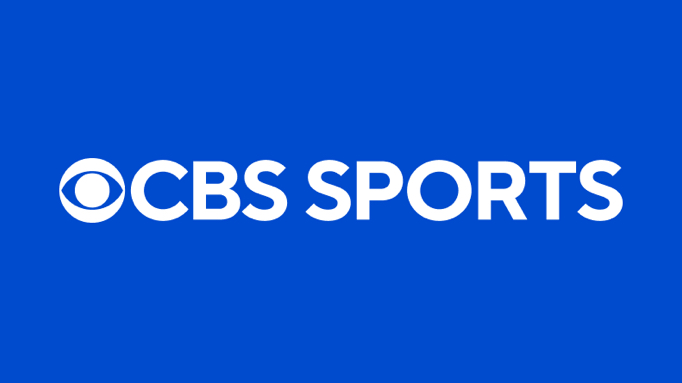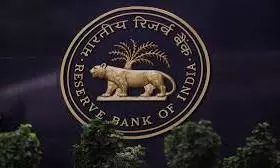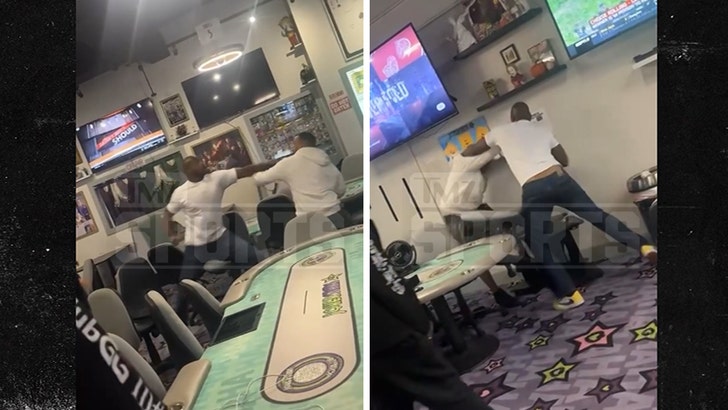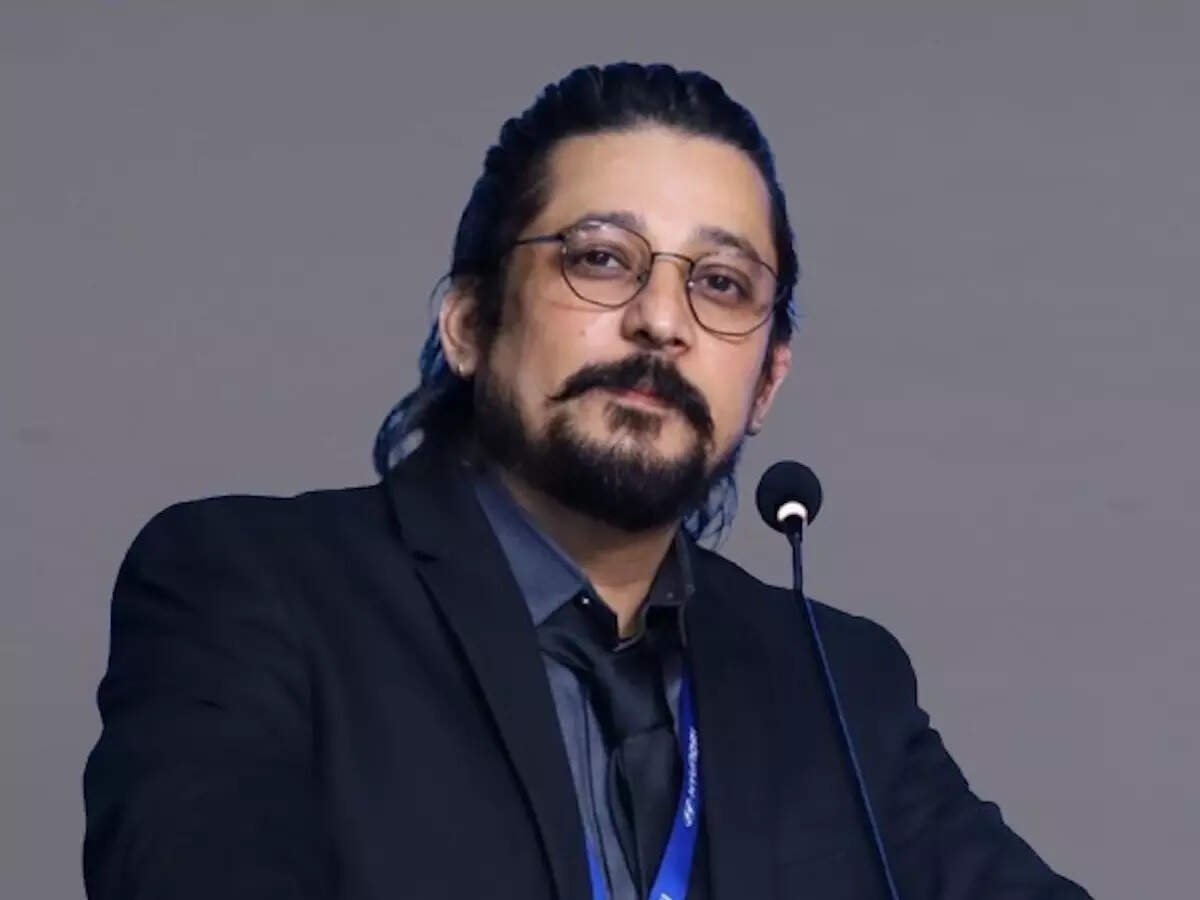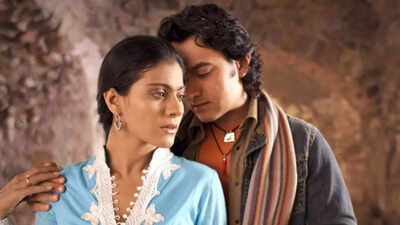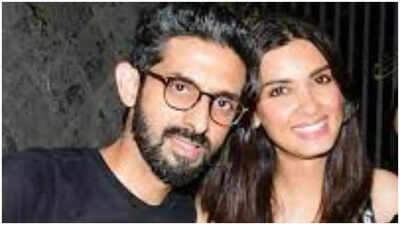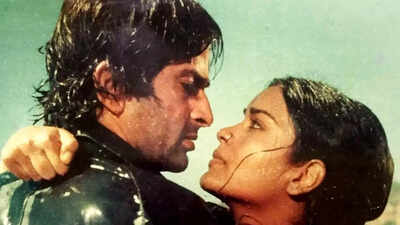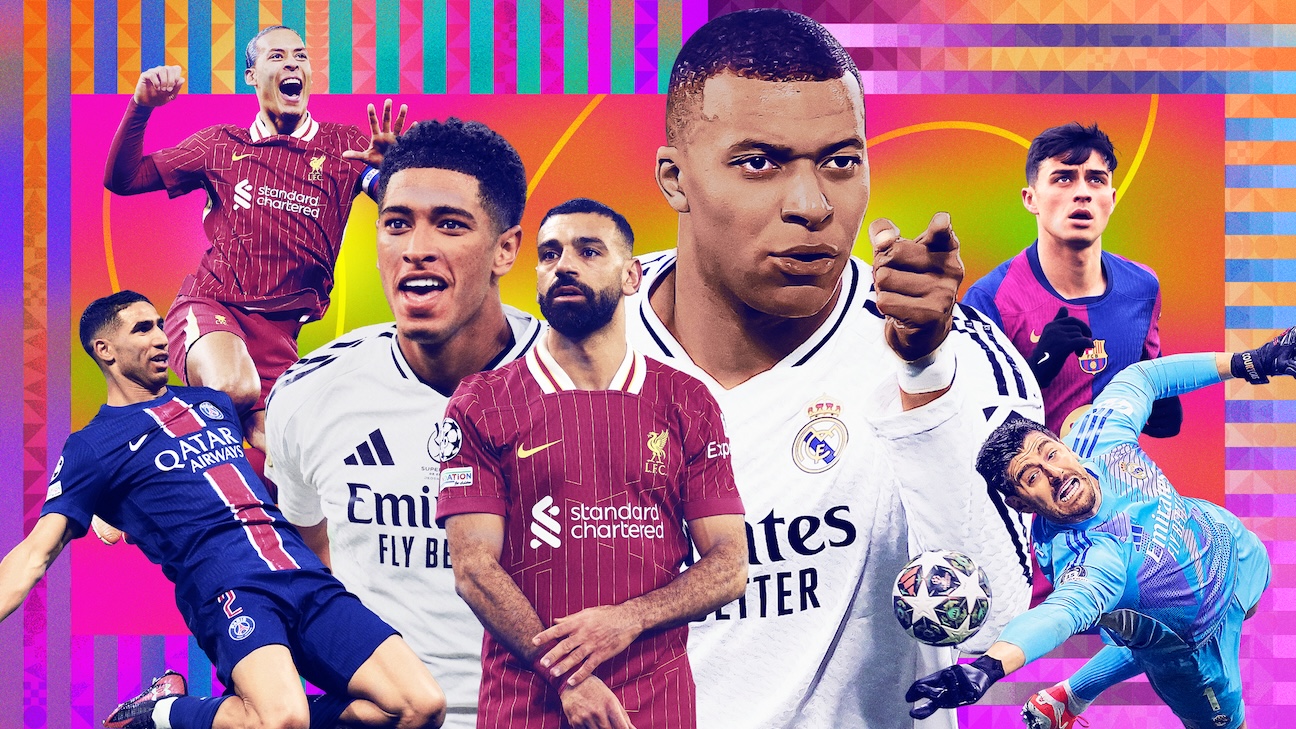It’s not every day that an NBA team is sold. And, prior to Wednesday afternoon, no NBA team had ever been sold for $10 billion — or anywhere close to it.
But no NBA team is like the Los Angeles Lakers, which is what made Wednesday’s news from ESPN’s Shams Charania that the majority stake in the franchise would be sold by the Buss family to businessman Mark Walter for a record $10 billion valuation such a massive story, to go along with a massive number.
There is no bigger brand in the NBA — and possibly all of North American sports — than the Lakers, whose purple and gold colors are worn around the world and are synonymous with some of the sport’s biggest names and most iconic teams. Since Dr. Jerry Buss purchased the team in 1979, the Lakers have won 11 titles and won over 60% of their games, both the best of any NBA franchise over that span.
But there is also no team that has been more identified with the past, from an ownership standpoint, than the Lakers, who haven’t confirmed the sale and have declined to comment on it. The six children of Dr. Jerry Buss — led by the team’s governor, Jeanie, whom sources told ESPN’s Ramona Shelburne will remain the team’s governor for “at least a number of years” — have tried to carry their father’s legacy forward as the sport has changed around them.
“This is a good move,” said one league source who has frequent interactions with the franchise. “The Lakers can finally be run like a real business.”
For a team whose identity centers around prestige and glamor, the Lakers, under the Buss family’s ownership has, in many ways, operated like the biggest mom-and-pop shop in sports, with all the constraints that come with it.
“Look at the guy across town from them,” said another league source.
Steve Ballmer, who purchased the in-city rival LA Clippers for a then-record $2 billion in 2014 — and who then spent and additional $2 billion on the Intuit Dome so the Clippers no longer had to share an arena with the Lakers — happens to be the eighth-wealthiest person on the planet, according to Forbes, with a net worth north of $130 billion.
What made the Lakers unique, in comparison to virtually every other NBA team, is that for the Buss family, there was no other family business. Or, more to the point, no significant additional revenue stream.
The Lakers, under the Buss family, ran on the revenue generated by the team. Despite all of the natural advantages Los Angeles enjoys, that presented a challenge in a league where ownership groups led by people like Ballmer or the Adelson family (who bought the Dallas Mavericks at a $4 billion valuation in 2023) have the ability to pour many more resources into their teams than the Lakers have been able to — or done.
“Most of these owners now, this is a part of their portfolio,” a league executive said. “It’s not the only thing in their portfolio.”
What has allowed the Lakers to keep up with the rest of the NBA has been their massive local television rights deal with Spectrum – a package that pays Los Angeles a staggering $3 billion over 20 years, beginning in 2012. That deal dwarfs what other teams are bringing in.
But relying on a fading business to fund the team was always a perilous long-term plan as regional sports networks have folded. And, despite that massive yearly infusion of cash, the Lakers couldn’t compete dollar-for-dollar with Ballmer and other deep-pocketed owners, causing them to lag behind in ways known – and not.
That won’t be a problem anymore.
“It makes sense,” an executive said of the family’s decision to sell the controlling stake in the franchise. “But with the way the league is going, I don’t think they could afford to be in this business. It just costs too much day-to-day.”
What the Lakers can learn from the Dodgers
The timing of the sale is not, however, an indictment of the Buss family’s ability to run a successful, money-making enterprise.
The Lakers still operated a profitable business in recent years as the salary cap grew exponentially, sources said. Since Jeanie Buss became governor in 2013, the Lakers have spent more than $1.5 billion in salaries and tax, eighth in the league in that span according to ESPN NBA front office insider Bobby Marks, and won their 17th title in 2020. The only team with more championships since Dr. Buss left the franchise to his children is the Golden State Warriors and their dynastic run of four.
But in the NBA, teams endlessly scheme to discover every little advantage they can, and the relatively cash-poor Lakers struggled to keep up with the arms race.
In 2019, negotiations with Tyronn Lue to become their next head coach stalled in part over money, with Lue seeking an annual salary of $7 million over five years – commensurate with the other coaches in the league with championship experience at the time. L.A. offered an annual salary of $6 million over three years.
In 2021, negotiations with free agent guard Alex Caruso also crumbled because of money. The Lakers, citing luxury tax concerns, offered a three-year deal worth $21 million, sources said. Caruso signed with the Chicago Bulls instead for four years, $37 million — and is now a critical piece on the Oklahoma City Thunder and last year signed a four-year, $81 million extension with the franchise.
Until the Luka Doncic deal in February, when L.A. committed to adding $55,000 in salary, the Lakers hadn’t taken back money in a trade since 2013.
Instances of the Lakers’ miserly traits are wide-ranging.
• An assistant coach was not approved to stay at the same hotel as the player he was traveling to work out with in the offseason because the room was too expensive.
• Former assistant GM Ronnie Lester’s contract was not renewed during the NBA lockout in 2011, a financial decision and one of many in a rash of layoffs or non-renewals.
• The team applied for federal relief through the Small Business Administration’s Paycheck Protection Program during the COVID-19 hiatus. After considerable backlash, they later returned the $4.6 million to the government.
• They were the only NBA team without a representative at the Sloan Analytics Conference in 2013 because they didn’t have much of an analytics department to speak of. While the team has committed more resources recently at the behest of coach JJ Redick, it was an area the Lakers had long lagged behind compared to the rest of the league.
Walter’s reputation as an owner is the opposite.
And as soon as he purchased a minority stake of the Lakers in 2021, this sale was a possibility, if not an inevitably. “Somebody of the magnitude of Mark Walter comes in,” a league source said, “it was probably a forgone conclusion at some point in time.”
Walter’s success since acquiring another iconic Los Angeles franchise, the Dodgers, from the McCourt family back in 2012 is a window into how he operates.
There are plenty of meaningful differences between Major League Baseball and the NBA . There is no salary cap in baseball, and there is one in basketball. There’s a full minor league system in baseball, there’s only a limited one in basketball, with far fewer privileges to control rights over developed players.
Still, when Walter and his partners – including, it should be noted, Lakers legend Magic Johnson — bought the Dodgers, they did far more than simply go pay for the best players and watch wins appear on the field. Instead, they have poured considerable resources into every level of the franchise — something that, with no cap on off-court spending in the NBA, they could replicate with the Lakers.
The Dodgers hired Andrew Friedman, seen as one of the best executives in baseball, away from the small market Tampa Bay Rays — a franchise that had succeeded for years, despite having a low payroll, by winning in every way on the margins.
In a little more than a decade, Walter and his group built out organization that rivals any in baseball, using that financial might to build out analytics and scouting staffs, causing the Dodgers to become a behemoth across all fronts so that they could not only sign Shohei Ohtani as a free agent, but also use their minor league system to acquire other stars like Mookie Betts.
“It will be interesting to see if the Lakers can become what everyone thinks they have been, which is this cash cow, spend money at all costs, do whatever it takes to win,” said one league source.
“The Yankees and Lakers have always been put in the same class, but it’s not the same. I’ve never worked in baseball, but they’re not the Yankees.”
And, in many ways, and as painful as it might be for Lakers fans, they can look at Ballmer and the Clippers as an example of what the future of this franchise could be.
Ballmer spent years crafting the Intuit Dome, his new home for the Clippers, and has invested heavily in building a massive front office under the leadership of president of basketball operations Lawrence Frank and general manager Trent Redden.
Expanding the front office for the Lakers under Walter is a no-brainer.
“For years it was Mitch Kupchak and that was it,” a league source said of the Lakers’ former GM. “And now it’s Rob Pelinka, and no disrespect, and that’s it.”
Following the Dodgers model, even if Pelinka, who recently signed a multi-year extension and was promoted to president of basketball operations, stays on, more brain power will be added to the room.
“Who is their Andrew Friedman?” a league source asked. “Is it Bob [Myers]? Is it Masai [Ujiri]? Is it Sam Presti?”
And now they will have the compensation available to go after the best in the business.
“When Ballmer bought the Clippers, you’ve seen how he’s invested in the organization at every level,” said another source. “Has it won a championship? No, but they’re a great organization. They’re top five in the NBA in wins over the last 10 years and they’ve had a streak of making the playoffs when they never used to make them at all.
“The on-court is not where this is going to get the most impact. It’s going to be off-court. “
How will this impact NBA expansion
This will do nothing to slow down the talk about expansion coming to the NBA, multiple sources said. For months, sources had said the sale of the NBA other iconic franchise, the Boston Celtics, was holding up the process, and particularly the final figure.
That figure turned out to be a record $6.1 billion – a staggering amount that, sources said, was particularly surprising given the Celtics don’t own their arena, TD Garden, in Boston. That number was 50% higher than the previous record of $4 billion that was paid by Mat Ishbia in 2023 to acquire the Phoenix Suns.
Now another team without control over its arena — the Lakers — is about to be sold at a valuation 65% higher than that record (the deal could be finalized as soon as next month’s Board of Governors meeting in Las Vegas).
At that same news conference earlier this month, Silver not only said that expansion will be a topic at next month’s meeting, but that there will likely be a recommendation to create a committee to formally study the topic — the next official step toward potential expansion.
“There’s been no lack of interest,” Silver said. “I essentially have said to people from several different cities, ‘We’re just not engaging in that process right now.’ I want to be fair to everyone. So I don’t want to have meetings with some and not others. So if we were to say yes, we’re now going to move into a more formal exploratory phase. “
These prices should mean the expansion fees could get into the range of $6 billion per team, sources said – meaning the current 30 owners, if there are two expansion teams, would each receive a check for roughly $400 million.
How will this impact the offseason
While it will take some time for this sale to be finalized, the fact it is happening at the beginning of a critically important and consequential offseason for the Lakers is another marker of the franchise moving into a new era – one that started back in February, when they made their stunning acquisition of Doncic.
There are several significant items on the Lakers’ to-do list as the franchise tries to build on last season’s surprising 50-win season in Redick’s first year as head coach, which ended with the Lakers losing to the Minnesota Timberwolves in five games in the first round of the NBA playoffs.
The biggest of those questions is the future of Doncic in Los Angeles.
Doncic can sign a contract extension on August 2 for as much as four years and $229 million, per ESPN’s Bobby Marks, but he also could agree to a two-year extension, to get him to 10 years of service in the summer of 2028, when he could sign a five-year max contract at 35 percent of the salary cap to maximize his earnings.
Or, he could choose to wait until next summer and hit unrestricted free agency. At that point, he could sign for as much as a five-year, $296 million deal to stay with the Lakers long-term, per Marks – or he could leave.
A source close to Doncic said that Walter’s deep pockets, combined with his results with the Dodgers, makes L.A. that much more appealing for the 26-year-old superstar.
The Lakers are an amazing organization. I’m looking forward to meeting Mark and excited about the future. I am also grateful to Jeanie and the Buss family for welcoming me to LA, and I’m happy that Jeanie will continue to be involved. I look forward to working with both of them…
— Luka Doncic (@luka7doncic) June 19, 2025
“You always want the wealthiest owners, so that speaks for itself,” the source said. “And his track record speaks for itself. … [Doncic] wants to win. This owner’s proven that he wants to win. So this is a plus plus.”
Doncic isn’t the only item on the agenda for Pelinka and the rest of L.A.’s front office. LeBron James has a $52.6 million player option for next season, which ESPN’s Shams Charania has reported he is likely to opt into.
At this point, James – now 40 years old and the league’s oldest player – is taking a year-by-year approach, and while there is no expectation of him going elsewhere, there is a level of uncertainty over which path he will take.
While James’ decision is still pending, a source close to James suggested that Walter could be a valuable resource for James as he pursues his post-playing career goal of one day owning an NBA franchise, too.
And then there’s the rest of the roster, which the Lakers hope to simultaneously upgrade around Doncic and James while also trying to find ways to grow with Doncic, 26, for the next several years.
Dorian Finney-Smith, another midseason trade acquisition and a Doncic friend from their time together in Dallas, has a $15.3 million player option for next season that has to get sorted out. Then there’s the team’s glaring hole at center – one the Lakers briefly looked like they had filled at the NBA’s trade deadline, only to later void their deal with the Charlotte Hornets over concerns over the physical of Hornets center Mark Williams.
So not only do the Lakers have to try to find the kind of lob-catching center Doncic desires, as well as adding more shooting to a roster that lacks it, but they have to do it with minimal salary cap flexibility and trade assets, with only the $5.7 million tax-payer’s mid-level exception to offer to free agents if James opts into his deal. They also own just one tradeable first round pick (either 2031 or ’32) to put in a potential deal for upgrades.
This is where Walter, and his billions, can’t help.
It’s a challenging starting point for a team that, if it hopes to compete, has to try to catch up to the Thunder, who are armed with a burgeoning young core led by 26-year-old Shai Gilgeous-Alexander, this year’s MVP, plus oodles of future draft capital to further strengthen the roster.
The irony of Wednesday’s news is that, for the past two weeks, the NBA Finals have been a showcase for two small market teams – the Thunder and Indiana Pacers – and the methodical team-building processes that have slowly built them into contenders.
And so while the two of them fight for the Larry O’Brien Trophy, the Lakers are embarking on a new era in the franchise’s history — one they hope will lead them back to the place they’ve been 17 times before.




